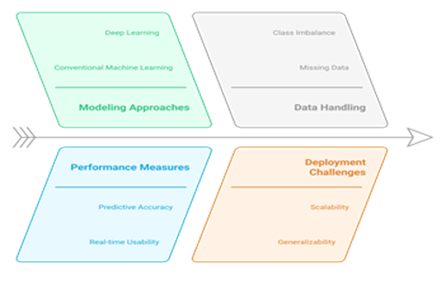A Comparative Review of Predictive Models for Waterborne Disease Outbreaks
Main Article Content
Abstract
Waterborne disease outbreaks pose ever-present threats to public health, especially in less developed areas where clean water and sanitation facilities are yet to be made available. Predictive modeling using machine learning and AI has come to be regarded as a crucial instrument in early detection and prevention. This review comparatively analyzes multiple predictive models for forecasting waterborne disease outbreaks employing techniques including ensemble learning, deep learning, spatio-temporal, and IoT-based monitoring systems. The critical issues addressed are class imbalance, missing data imputation, and anomaly detection in water quality datasets. Evaluation criteria, model performance, and data preprocessing methods are examined to bring out strengths, weaknesses, and potential opportunities for improvement. In doing so, the review intends to provide a framework within which researchers and policymakers may be guided to select and build more sturdy predictive frameworks to limit the impact of waterborne diseases.
